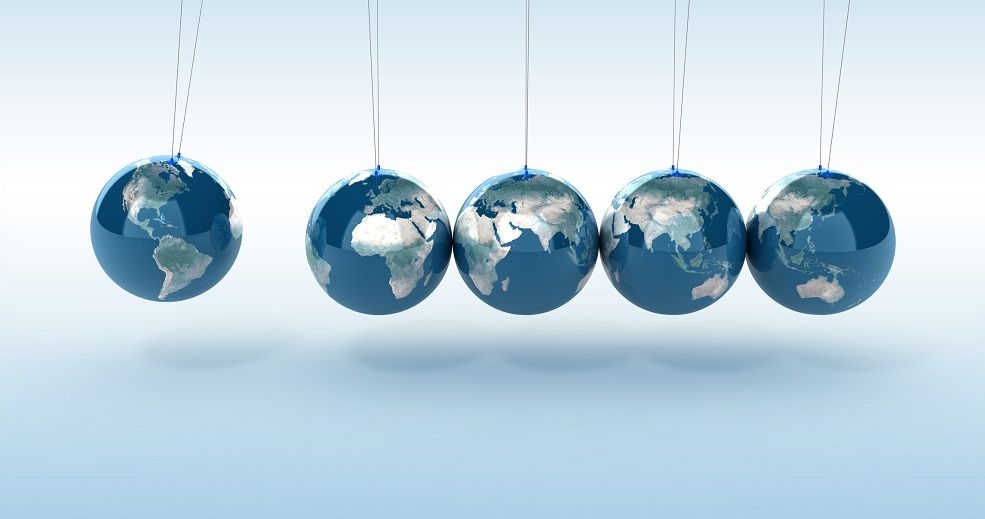
We are living in a time of profound change. In the midst of a geopolitical reconfiguration, the world is being turned upside down by the digital technology revolution and the dawning artificial intelligence revolution as well as embarking on a rapid transition towards a low-carbon economy in response to climate change.
Successive shocks – from the Covid pandemic to the war in Ukraine – have darkened the outlook, creating a sense of sailing in thick fog. Recent history has had its share of worrying times when tension and even severe disruption has upset both the geopolitical balance, as it did during the Cold War, and the economic equilibrium in the wake of oil shocks.
Global geopolitics currently hinges around the strategic rivalry between China and the United States. The tug of war between these two great powers fighting for global supremacy is gradually morphing into a conflict with multiple facets – diplomatic, commercial, technological and ideological – to the point where there are fears that this face-off could degenerate into a full-scale war with hot spots in Taiwan and the South China Sea. This hegemonic clash is sometimes referred to as a “new Cold War” in the same vein as the post-war superpower struggle between the United States and the Soviet Union, which shaped international relations from 1945 onwards.In the aftermath of the Second World War, the world divided into two camps: the Communist Bloc, led by the Soviet Union, and the Western camp, spearheaded by the United States, defending a liberal, democratic and capitalist system. The two great powers embarked on an arms race to demonstrate their technological superiority as well as waging proxy wars in Korea and Vietnam in a clash of ideologies via their respective allies. Only the nuclear deterrent and its “balance of terror” prevented direct military conflict and inaugurated an unstable geopolitical equilibrium with alternating periods of tension and detente until the fall of the Berlin War and the collapse of the Eastern Bloc at the dawn of the 1990s. The hegemonic power struggle between China and the United States certainly has a whiff of the Cold War about it. But in a globalised, interconnected world that benefits both camps, the opposing parties are projecting their will to power less through the use of force and more through the deployment of influence – a far cry from the head-on clash of the first Cold War.
Economically speaking, the thirty-year post-war boom was a time of unprecedented expansion as the world shifted from a war economy to a peacetime economy and from scarcity to abundance. Innovation increasingly became the norm, there was no shortage of jobs and the scientific organisation of labour – known as Taylorism – brought substantial productivity gains, redistributed in the form of higher wages and purchasing power. Mass production expanded and consumer society was born against a backdrop of accelerated economic catch-up. This model began to run out of steam in the late 1960s with productivity, profits and investment all declining as consumption of durable goods reached saturation point. But the real break came in October 1973. Following the outbreak of the Yom Kippur War, oil-producing countries decided to hit back at Israel’s allies by announcing an embargo on oil, causing oil prices to rise from $3 to $12 a barrel in the space of just a few months. The oil crisis worsened after the Iranian Revolution of 1979, with oil prices doubling again. With oil at the time accounting for over 45% of the global energy mix, production costs and prices soared, industrial production plummeted, many companies went bust and unemployment shot up. Stagflation – when high inflation coexists with economic stagnation – began to emerge. The failure of Keynesian stimulus policies paved the way for monetarism, which asserts that controlling the money supply is the way to tame inflation. Paul Volcker, who was appointed chair of the Federal Reserve in 1979, made fighting inflation a priority and hiked interest rates sharply, plunging the US economy into recession.
This surge in inflation against the backdrop of the oil crisis is not dissimilar to the current period, with the two exogenous shocks of Covid and the war in Ukraine also causing prices – particularly energy and food prices – to surge. This resurgence of inflation marks a radical change at a time when the world had become used to a sort of “new normal” of sluggish growth, low inflation and low interest rates. Furthermore, central banks, accustomed to this regime of low and stable inflation in which the slightest shock can tip the economy into deflation, were slow to react before enthusiastically embarking on a vigorous cycle of monetary tightening to stave off inflation. If the past is any guide to the future, the battle against inflation will probably be won, at the cost of a recession if necessary, which should restore things to how they were before the crisis, or almost… As Greek historian Thucydides said, history repeats itself, with crisis and disruption generating anxiety but also paving the way for a world of new possibilities.







